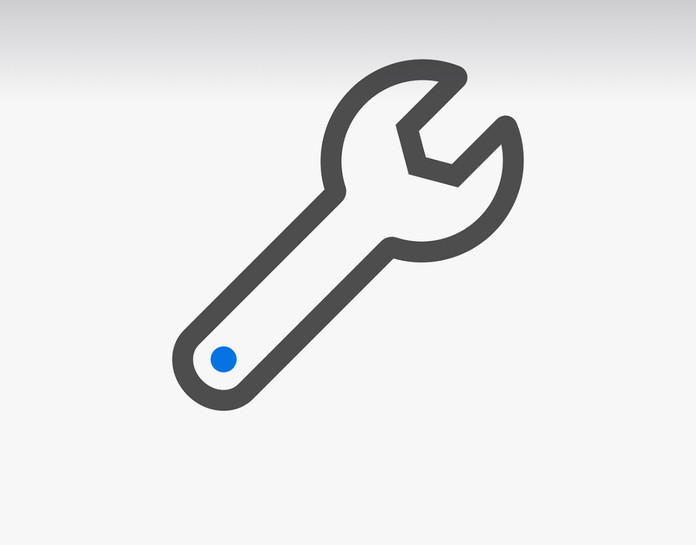Understanding Elliptical Maintenance
Ellipticals are fantastic machines for maintaining cardiovascular health and muscle tone, but like any complex equipment, they require regular upkeep. Understanding elliptical maintenance involves knowing the components of the machine, recognizing signs of wear and tear, and implementing a consistent maintenance routine. By keeping an elliptical in top condition, users can ensure a smooth, quiet, and effective workout experience.
Ellipticals comprise multiple moving parts and electronic components that need regular attention. Failure to maintain these parts can lead to a decrease in performance or even complete dysfunction of the machine. Regular checks and maintenance not only extend the lifespan of the elliptical but also help in preventing potential injuries caused by malfunctioning equipment.
In this guide, the focus will be on practical steps for maintaining your elliptical, covering daily, weekly, and monthly tasks. By following these steps, users can keep their machines in excellent condition, ensuring that every workout is as effective and enjoyable as the first.
Why Regular Maintenance is Crucial for Your Elliptical
Regular maintenance of an elliptical is crucial for several reasons, the foremost being safety. When components such as pedals, handles, or the drive belt become worn or loose, they can pose a risk of injury. Consistent maintenance ensures these parts are in optimal condition, reducing the risk of accidents and promoting a safe exercise environment.
Furthermore, regular maintenance enhances the performance of the elliptical. A well-maintained machine operates smoothly and quietly, providing a more enjoyable workout experience. This not only encourages regular use but also maximizes the benefits derived from the exercise, contributing to better fitness outcomes.
Finally, regular upkeep prolongs the lifespan of the elliptical. Investing time in maintenance can save money in the long run by avoiding costly repairs or premature replacement of the machine. By adopting a proactive approach to maintenance, users can ensure their elliptical remains a valuable part of their fitness routine for years to come.
Key Components of an Elliptical to Maintain
To effectively maintain an elliptical, it's essential to focus on its key components. These include the pedals, drive belt, flywheel, and electronic console. Each of these parts plays a vital role in the machine's operation and requires specific maintenance to function correctly.
Key Components:
-
Pedals: The pedals are crucial for user stability and comfort. Ensure they are clean and tightly secured, and check for any signs of wear.
-
Drive Belt: This component transfers power from the pedals to the flywheel. Inspect it regularly for tension and signs of wear or fraying.
-
Flywheel: Responsible for the machine's smooth operation, the flywheel needs to be dust-free and properly lubricated to function effectively.
-
Electronic Console: The console provides workout data and control settings. Keep it clean and ensure all buttons and displays function correctly.
Regularly checking these components and addressing any issues promptly will keep the elliptical running smoothly. Each component's maintenance contributes to the overall functionality, ensuring a seamless workout experience.
Daily Maintenance Checklist for Your Elliptical
Implementing a daily maintenance routine for your elliptical can significantly enhance its performance. This routine doesn't require much time but is essential for identifying and addressing minor issues before they escalate.
Daily Checklist:
-
Wipe Down Surfaces: Use a soft cloth to wipe down the machine's surfaces, removing sweat and dust. This prevents corrosion and keeps the machine looking new.
-
Inspect Moving Parts: Briefly inspect moving parts like pedals and handles for any unusual sounds or looseness.
-
Check Electronic Console: Ensure that all display panels and buttons are functioning correctly. Replace batteries if necessary.
-
Tighten Loose Parts: Quickly tighten any loose screws or bolts to prevent further loosening during workouts.
By following this daily checklist, users can maintain their elliptical in tip-top condition, ensuring reliability and safety during each workout session.
Weekly and Monthly Elliptical Maintenance Tasks
In addition to daily tasks, weekly and monthly maintenance is necessary to ensure the long-term functionality of your elliptical. These tasks are more thorough and can prevent the development of significant issues.
Weekly Tasks:
-
Deep Clean: Use a gentle cleaner to thoroughly clean all parts of the elliptical, focusing on areas prone to collecting dust and sweat.
-
Lubricate Moving Parts: Apply appropriate lubricant to the pedals and flywheel to maintain smooth movement.
-
Examine Cables and Connections: Check all cables and connections for signs of wear or damage and replace them if necessary.
Monthly Tasks:
-
Inspect the Drive Belt: Check the tension of the drive belt and adjust if needed. Look for any signs of wear or fraying.
-
Test Electrical Components: Ensure that all electronic components are functioning correctly, and update any software if the machine is equipped with a digital interface.
-
Check for Structural Integrity: Ensure that the frame and other structural components are intact, with no signs of cracks or damage.
By integrating these weekly and monthly tasks into a regular maintenance routine, users can significantly extend the lifespan of their elliptical and maintain its optimal performance.
Expert Tips for Cleaning Your Elliptical
Cleaning is a critical aspect of elliptical maintenance, not just for aesthetic reasons but also to ensure the machine's functionality. Experts recommend using specific techniques and products to effectively clean your elliptical without causing damage.
Expert Cleaning Tips:
-
Use Non-Abrasive Cleaners: Choose a mild, non-abrasive cleaner to avoid damaging the machine's finish. Avoid harsh chemicals that can corrode metal parts or degrade plastic components.
-
Focus on High-Touch Areas: Clean areas that frequently come into contact with skin, such as handles and pedals, more often. This prevents the buildup of sweat and bacteria.
-
Avoid Excess Moisture: When cleaning, use damp, not wet, cloths to prevent moisture from seeping into electronic components and causing damage.
Regular cleaning not only keeps the elliptical looking its best but also protects it from long-term damage. By following these expert tips, users can maintain both the appearance and functionality of their machine.
Lubrication: How and When to Lubricate Your Elliptical
Proper lubrication is vital for the smooth operation of an elliptical. It reduces friction between moving parts, preventing wear and tear and extending the life of the machine. Knowing how and when to lubricate is key to effective maintenance.
How to Lubricate:
-
Identify Moving Parts: Focus on areas such as the pedal arms and flywheel, which require regular lubrication.
-
Select the Right Lubricant: Choose a lubricant recommended by the manufacturer to ensure compatibility and effectiveness.
-
Apply Sparingly: Use only a small amount of lubricant to avoid buildup, which can attract dust and debris.
When to Lubricate:
-
Frequency: Lubricate every few months or as recommended by the manufacturer, considering the frequency of use.
-
Signs of Need: If the machine begins to squeak or experience resistance during use, it may be time to lubricate.
By following these guidelines, users can ensure their elliptical operates smoothly. Regular lubrication is a simple yet effective way to maintain the machine's efficiency and prolong its life.
Troubleshooting Common Elliptical Issues
Despite regular maintenance, users may occasionally encounter issues with their elliptical. Understanding common problems and knowing how to troubleshoot them can prevent downtime and frustration.
Common Issues and Solutions:
-
Squeaking or Grinding Noises: Often due to lack of lubrication or loose parts. Ensure all moving parts are lubricated and tighten any loose screws.
-
Display Malfunctions: Check battery levels and connections if the display is not functioning correctly. Replace batteries or reconnect cables as necessary.
-
Resistance Problems: If the resistance level is not changing, inspect the resistance motor and cables for any disconnections or damage.
By addressing these common issues promptly, users can prevent small problems from becoming significant, ensuring their elliptical remains in excellent working order.
When to Seek Professional Help for Your Elliptical
While many maintenance tasks can be performed at home, certain situations may require professional assistance. Knowing when to seek help can prevent further damage and ensure the safety and effectiveness of the elliptical.
Indicators for Professional Help:
-
Persistent Mechanical Issues: If issues such as abnormal noises or resistance problems persist despite troubleshooting, it may be time to contact a professional.
-
Electrical Failures: Complicated electrical problems, such as complete console failure, should be addressed by a qualified technician.
-
Structural Damage: If there are visible cracks or damage to the frame, a professional assessment is crucial to determine the machine's safety.
Seeking professional help when necessary can save time and prevent costly repairs in the future. Professionals have the expertise and tools to address complex issues effectively, ensuring the elliptical remains safe and functional.
Conclusion: Keeping Your Elliptical in Top Shape
Maintaining an elliptical involves a combination of regular cleaning, lubrication, and timely troubleshooting. By understanding the key components of the machine and implementing a consistent maintenance routine, users can ensure their elliptical remains in top condition.
Regular maintenance not only enhances the performance and safety of the machine but also extends its lifespan, providing long-term value for users. By taking a proactive approach to maintenance, individuals can enjoy a seamless and effective workout experience.


